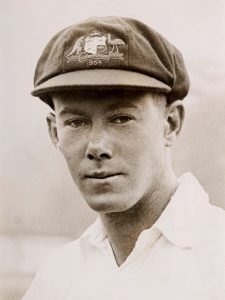‘Invincible’ Bill Brown, one of the last of the famous Australian Invincible Side of 1948, died on March 16, 2008, at the age of 95 in a nursing home in Brisbane. Former Australian Test captain Steve Waugh led the tributes to Brown. “He certainly had a very big influence over my era,” Waugh said. “I was very keen to have him involved in the Australian side because I thought he was what the Baggy Green was all about.
The spirit he had and the respect he had for playing for Australia and what it meant—he understood the modern era very well and gave us a great perspective.” Brown played in 22 Tests, scoring 1,592 runs at 46.82, and captained Australia in their first Test after the Second World War. In 1938 at Lord’s during the Ashes tour, Brown carried his bat for an unbeaten 206. Brown was the country’s oldest living Test cricketer and the third oldest in the world.
Although Brown’s career was often overshadowed by his better-known contemporaries, he played with the likes of Don Bradman, Bill Ponsford, Bill Woodfull, and Stan McCabe. So, he was, without a doubt, a first-rate opening batsman. Bill formed a prolific combination with Jack Fingleton, and the pair averaged 63.75 in their opening stands in ten Tests. They were at their most damaging on the 1935-36 tour of South Africa. They compiled three-century partnerships, including 233 in Cape Town, which remains a record for the first wicket in Australia-South Africa Tests.

Bill Brown’s personal pinnacle came at Lord’s on the 1938 Ashes tour, when he carried his bat for an unbeaten 206 in the first televised Test, a match that was also memorable for Wally Hammond’s 240. He had already scored 133 at Trent Bridge, and he had such a successful tour that he was second only to Bradman in Australia’s list of aggregates and averages, and his 512 Test runs at 73.14 earned him a Wisden Cricketer of the Year award for 1939.
A cautious opener, Brown took seriously the job description, which he later summarized as: “Stay there until lunchtime on the first day. The pace you scored at didn’t matter a darn.” His adherence to the team’s request might not have pleased all the fans, who were often left waiting for the appearance of Bradman at No. 3, but it did satisfy his teammates, and Australia won 14 of the 22 Tests in which Brown played.
Bill Brown’s three tours to England were all memorable for different reasons. He made his Test debut and scored 73 at Nottingham in 1934, which was followed by his maiden century in the next match at Lord’s. The 1938 visit earned him the Wisden honor, and ten years later he returned and, at the age of 35, played two tests during the invincible trip.
By then, his best days were behind him, but he went on to play one more Australian summer as the captain of Queensland, his home state. At the time of his death, he was the oldest Australian Test cricketer. Also, he was the first victim of Mankading. Bill Brown had brilliant records in first-class cricket. Overall, in 139 matches, he scored 13,838 at an average of 51.44 with 39 hundred and 66 fifties and held 110 catches.

Read More
-
Doug Ring – The Member of Invincible Team
-
Don Bradman Australia, 1928 – 1948
-
Bill Johnston – Bradman Invincible Bowler
-
Gil Langley – Former Australian Wicket Keeper
-
Victor Trumper – The Greatest Batsman of Golden Age
-
50,000 Runs in all forms of cricket
-
Richie Benaud Australia, 1952 – 1964
-
Ray Lindwall Australian Premier Fast Bowler 1946–60